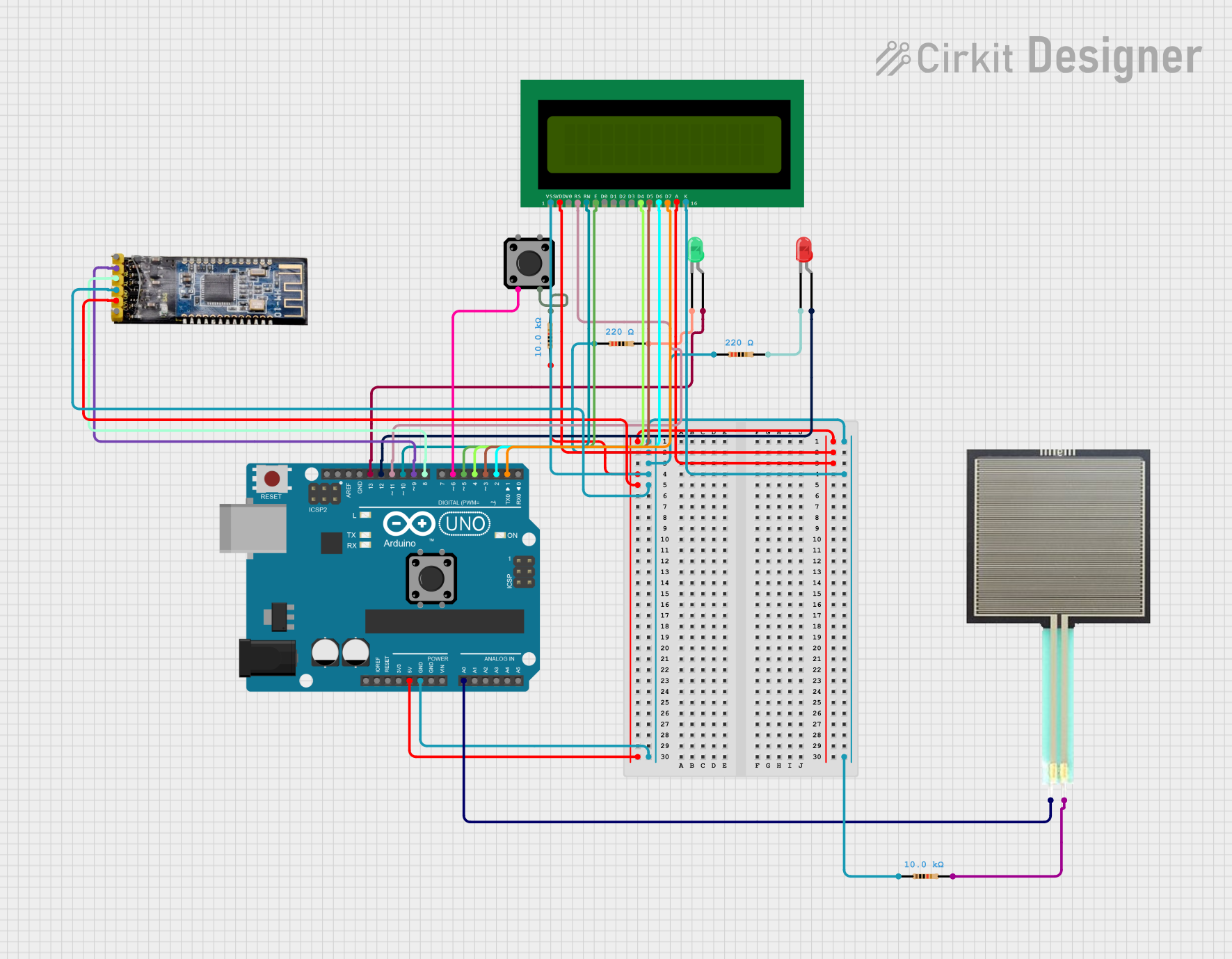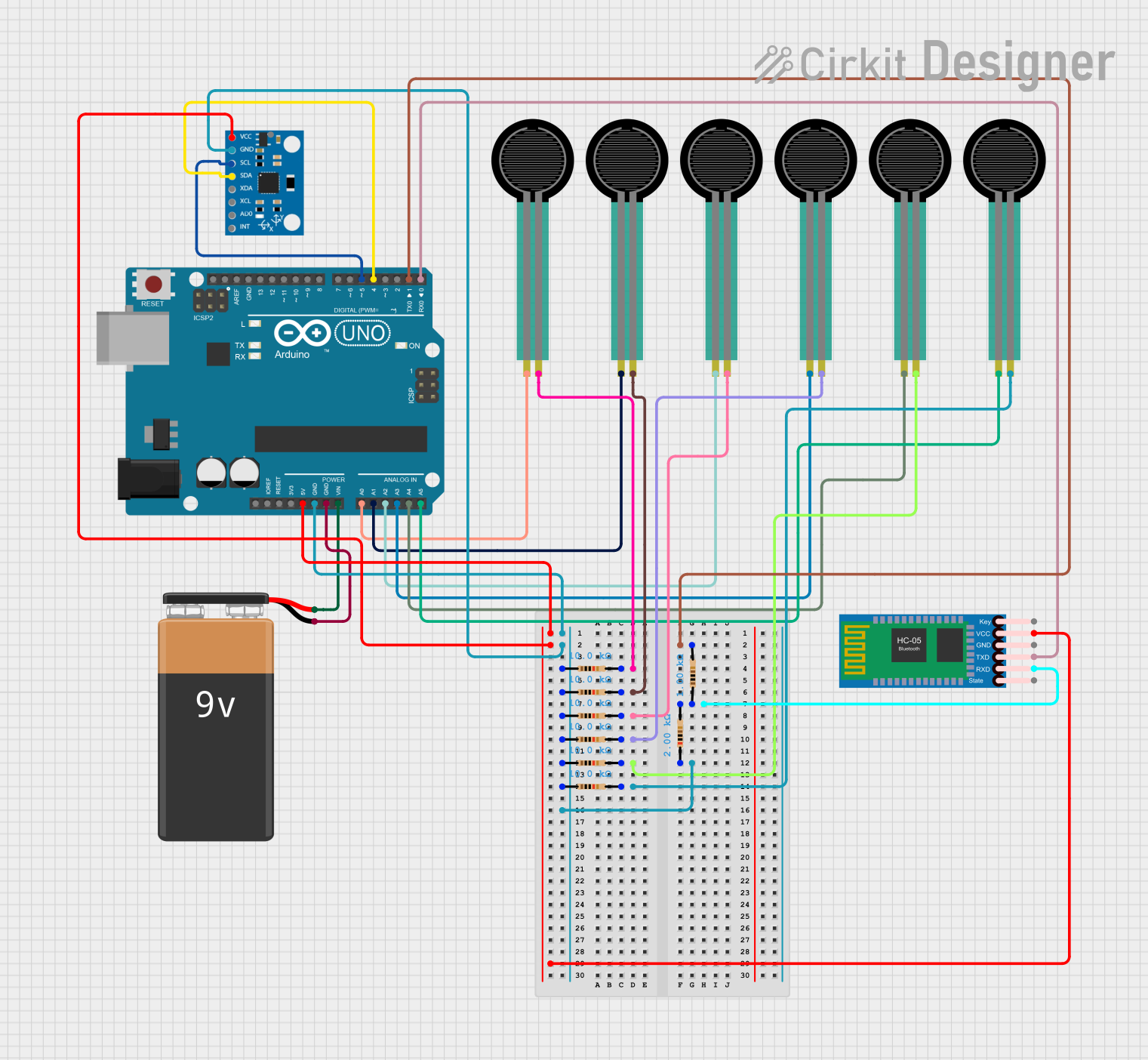
How to Use FRM050: Examples, Pinouts, and Specs

 Design with FRM050 in Cirkit Designer
Design with FRM050 in Cirkit DesignerIntroduction
The FRM050 is a fast recovery diode module designed for high-frequency and high-efficiency applications. With a blocking voltage of 50 volts, it is optimized for quick transitions from conducting to blocking states, minimizing power loss and improving overall circuit performance. Common applications include switch-mode power supplies, converters, free-wheeling diodes in motor control circuits, and as rectifiers in RF systems.
Explore Projects Built with FRM050

 Open Project in Cirkit Designer
Open Project in Cirkit Designer
 Open Project in Cirkit Designer
Open Project in Cirkit Designer
 Open Project in Cirkit Designer
Open Project in Cirkit Designer
 Open Project in Cirkit Designer
Open Project in Cirkit DesignerExplore Projects Built with FRM050

 Open Project in Cirkit Designer
Open Project in Cirkit Designer
 Open Project in Cirkit Designer
Open Project in Cirkit Designer
 Open Project in Cirkit Designer
Open Project in Cirkit Designer
 Open Project in Cirkit Designer
Open Project in Cirkit DesignerTechnical Specifications
Key Technical Details
- Maximum Repetitive Reverse Voltage (Vrrm): 50V
- Average Forward Current (If(AV)): Specified by manufacturer (e.g., 5A)
- Peak Forward Surge Current (Ifsm): Specified by manufacturer (e.g., 150A)
- Reverse Recovery Time (trr): Specified by manufacturer (e.g., 35ns)
- Forward Voltage Drop (Vf): Specified by manufacturer (e.g., 0.95V at If(AV))
- Operating Junction Temperature Range: Specified by manufacturer (e.g., -55°C to +150°C)
Pin Configuration and Descriptions
| Pin Number | Description |
|---|---|
| 1 | Anode |
| 2 | Cathode (Case) |
Note: The pin configuration is based on a common diode module package. The actual pinout may vary depending on the manufacturer's design. Always refer to the manufacturer's datasheet for exact details.
Usage Instructions
How to Use the FRM050 in a Circuit
- Identify the Pins: Determine the anode and cathode pins of the FRM050 based on the pin configuration provided in the datasheet.
- Circuit Integration: Connect the anode to the point in the circuit where the diode will conduct the forward current. Connect the cathode to the return path or ground, as appropriate for your circuit design.
- Heat Management: Ensure proper heat sinking is in place, as diodes can generate significant heat during operation.
- Reverse Voltage Protection: Make sure the reverse voltage does not exceed the specified maximum repetitive reverse voltage (Vrrm) to prevent damage.
Important Considerations and Best Practices
- Current Rating: Do not exceed the average forward current rating to avoid thermal overload.
- Surge Current: Be mindful of transient conditions that may cause surge currents above the specified peak forward surge current (Ifsm).
- Reverse Recovery Time: When used in high-frequency applications, consider the reverse recovery time (trr) to ensure it meets the switching speed requirements of your circuit.
- Forward Voltage Drop: Account for the forward voltage drop (Vf) in your power loss calculations.
Troubleshooting and FAQs
Common Issues
- Excessive Heat: If the diode is running hot, check for overcurrent conditions or inadequate heat sinking.
- Unexpected Voltage Drops: Verify that the forward voltage drop is within specifications and that there are no issues with the circuit's load or power supply.
- Diode Not Conducting: Ensure that the diode is correctly oriented with the anode and cathode in the proper direction.
Solutions and Tips for Troubleshooting
- Heat Dissipation: Improve heat dissipation by using a larger heat sink or improving airflow around the diode.
- Current Limiting: Implement current limiting measures such as fuses or current-limiting resistors to protect the diode.
- Circuit Analysis: Double-check the circuit design and component values to ensure they align with the diode's specifications.
FAQs
Q: Can the FRM050 be used in AC applications? A: Yes, the FRM050 can be used in AC applications as a rectifier, but ensure that the reverse voltage and frequency are within the diode's specifications.
Q: What is the significance of the reverse recovery time? A: The reverse recovery time affects the efficiency of the diode in high-frequency applications. A shorter trr means quicker switching and less power loss.
Q: How do I choose the right heat sink for the FRM050? A: The heat sink should be chosen based on the thermal resistance, the expected power dissipation of the diode, and the ambient temperature of the operating environment.
Note: This documentation is a general guide. Always consult the manufacturer's datasheet for the most accurate and specific information about the FRM050 fast recovery diode module.